What is good about the Kostroma tomato and why summer residents love it so much
Surprisingly, many centuries ago the tomato was mistaken for a poisonous berry. People found the taste and appearance of the vegetable questionable. And now, centuries later, tomatoes are found in every garden. Gardeners love this crop for its ease of care and excellent taste. Among the variety of varieties, the Kostroma tomato variety stands out. This is what will be discussed further.
Description of the variety
The Kostroma variety is a hybrid obtained as a result of the work of agronomists. Kostroma is grown in any conditions, but a rich harvest is obtained precisely when planted in a greenhouse. The ripening period of vegetables is average, the first harvest is harvested 105 days after planting. Below is a detailed description and description of the Kostroma tomato variety.
Distinctive features
The leaves are medium size, dark green in color. The bushes grow up to 2 m high, which means that they must be tied up. Otherwise, the stem breaks under the weight of ripened tomatoes. The vegetable forms stepsons, which are removed once a week. Otherwise, the tomato does not require special care skills.
Characteristics of tomatoes, yield
About 5 kg of tomatoes are harvested from one bush of this variety. And from 1 sq.m it comes out to about 20 kg. Such indicators make it possible to grow the variety not only for personal consumption, but also on an industrial scale.
The fruits are red in color and have a pronounced aroma. The shape is flat-round, slightly elongated. Kostroma has a dense and glossy skin, and the flesh is juicy, not watery.On average, the weight of one tomato is about 110 g.
Important! The Kostroma variety has high storage and transportation characteristics and does not lose its appearance even when transported over long distances.
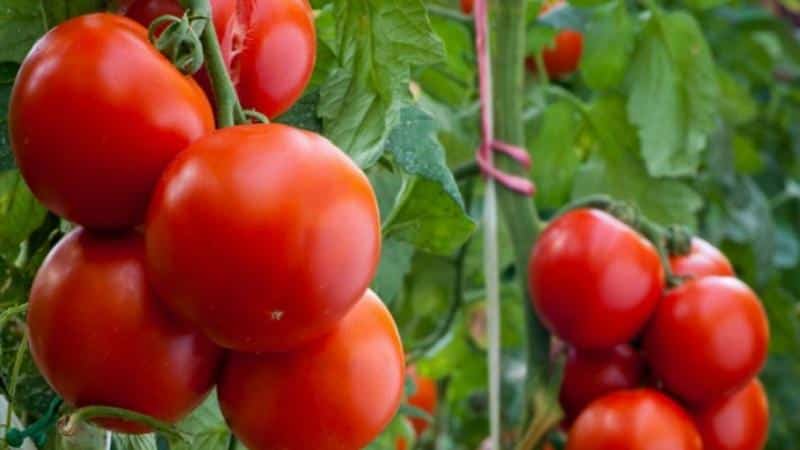
How to grow seedlings
Some gardeners argue that it is not at all necessary to grow seedlings for a hybrid. However, most gardeners adhere to the classical rules and recommend paying special attention to seedlings.
Seed preparation
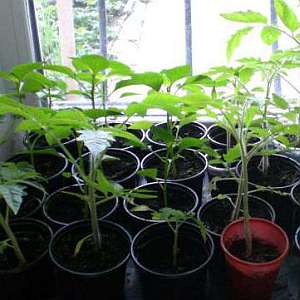 Since Kostroma is a hybrid, seeds are purchased only in the store. Such seeds are already disinfected in advance and treated with a special solution.
Since Kostroma is a hybrid, seeds are purchased only in the store. Such seeds are already disinfected in advance and treated with a special solution.
After purchase, the seeds are hardened. This will make it easier for the material to withstand frosts and other weather changes in the future. To do this, place the seeds in the freezer for 10 hours, and then take them out and leave them at room temperature for a day. Then they are placed in the freezer again and taken out for the same time. Perform such manipulations 3-4 times. This way, future vegetables will be ready for bad weather.
The final stage of preparation is soaking. It consists of placing the seeds on damp gauze. Seeds in a humid environment will sprout faster and take root in the future soil faster.
Container and soil
Any container of the appropriate size is suitable for seedlings. The main thing is to wash the container clean and dry it before planting. It’s even better to treat it from the inside with hydrogen peroxide, then rinse with water.
Soil for seedlings is purchased at the store, but many prepare it themselves. The soil must contain nutrients for the plant. The ideal option is a mixture of humus, peat and sawdust. Humus saturates the soil with vitamins, peat retains moisture, and sawdust serves as a good drainage component.
Important! When preparing the soil yourself, do not forget to disinfect it. For example, by heating in the oven. High temperatures will destroy bacteria and viruses, as well as insects.
Sowing
To begin, pour soil into the container. Using a pencil, make small holes in the soil for seeds and place the grains in them. Sprinkle earth on top. The ideal distance between seeds is at least 5 cm. Some make it even simpler. For example, they place the seeds on soil prepared in advance and sprinkle a 1 cm thick layer of soil on top.
Growing and care
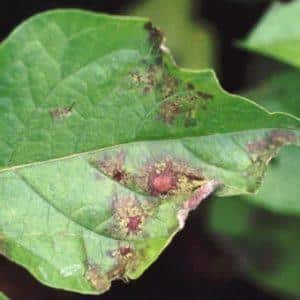 First of all, monitor soil moisture. If the soil is dry, it is recommended to irrigate it with a spray bottle. If there is a lot of moisture, then on the contrary, we temporarily reduce the number of waterings. Due to an excess of water, mold forms in the soil and on plants. As a preventive measure, some gardeners use well-known antifungal drugs, such as Fitosporin or Fundazol.
First of all, monitor soil moisture. If the soil is dry, it is recommended to irrigate it with a spray bottle. If there is a lot of moisture, then on the contrary, we temporarily reduce the number of waterings. Due to an excess of water, mold forms in the soil and on plants. As a preventive measure, some gardeners use well-known antifungal drugs, such as Fitosporin or Fundazol.
Water the soil regularly using a pipette or syringe. This way the water gets right under the root, and not on the leaves or stem of the sprouts. Containers with seedlings are placed in a well-lit place. A window sill is ideal. If there is not enough light, then additional lighting is provided for the tomatoes using fluorescent lamps.
Fertilizers will be needed. For the first time, a tomato is fed 2 weeks after the first shoots appear. It is best to use natural organic fertilizers based on grass or manure. It is recommended to apply subsequent fertilizing every week. These can be humic fertilizers.
How to plant tomatoes
As soon as the seedlings have sprouted, they begin to plant the tomato in the garden. Tomatoes love spacious and well-lit places.The best predecessors for them are beds of zucchini, peppers, and cucumbers. A cloudy, windless day is ideal for planting.
Landing
To get a good harvest from Kostroma, farmers advise using a mixture of garden soil and “Universal” peat soil in a 1:1 ratio. This composition will enrich the plant with all the necessary vitamins and speed up the ripening time.
Plant the seedlings so that the central stem goes 2 cm deep. In a couple of days, roots will form around this stem, and the root system will become even more powerful and durable. The distance between the bushes should be at least 30 cm, otherwise the plant will not have enough space. After planting, be sure to water the beds with plenty of warm water.
Care
Bushes need shaping. In other words, this is the timely removal of additional shoots (stepchildren) and pinching of the top. These operations allow the bushes to grow and form many stems. The more stems, the more tomatoes.
It is recommended to remove stepchildren for the first time after 20 days. Repeat this procedure every week to prevent overgrowth.
Note. Excess shoots are not cut off, but broken off. They break down best in the morning hours.
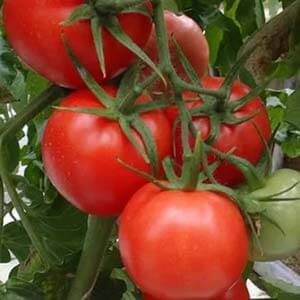 The root shoots, which most often peek out from under the ground, are also subject to removal. The tops are pinched so that the plant stops growing.
The root shoots, which most often peek out from under the ground, are also subject to removal. The tops are pinched so that the plant stops growing.
Besides stepsoning, don't forget about watering. It is best to water tomatoes in the morning or evening. If the summer was dry, the amount of moisture is increased, if there was a lot of rain, it is reduced. It is necessary to control water consumption so as not to develop favorable conditions for pests and diseases.
Do not neglect such means as removing weeds and loosening the soil. Weeds feed on tomatoes, so you need to get rid of them every 7-10 days. And loosening makes the soil more nutritious and lighter.
And of course, Kostroma tomatoes need to be fed. Mineral or organic fertilizers are suitable. For example, superphosphate or ammonium nitrate, urea or wood ash.
Important! Be careful with nitrogen-containing preparations; their excess leads to cracking of tomatoes.
Features of cultivation and possible difficulties
Pay special attention to such a procedure as tying up bushes. Most often, wooden pegs and scraps of fabric are used for this. Place the pegs at a distance of 1 m from the bush. They should be the same in height.
Also remember that the land needs to be cultivated before planting. A solution of potassium permanganate is excellent for this. If you are planting Kostroma in a greenhouse, then in addition to the soil, treat the walls, doors, windows, pegs, and so on.
Diseases and pests
The most common diseases of the variety:
- late blight. Appears due to excess moisture and improper care. Looks like brown spots on the leaves. It is almost impossible to get rid of it, but it can be prevented. Periodically treat the plants with garlic infusion or wood ash;
- root rot. The name speaks for itself; harmful bacteria form on the roots and eat the plant from the inside. As a preventative measure, treat the beds with a solution based on tobacco leaves;
- powdery mildew. Looks like a white coating on the leaves. Ammonium nitrate helps to cope with it;
- blackleg. Infects plant roots. Capable of spreading to neighboring bushes.Fitosporin is used to combat it.
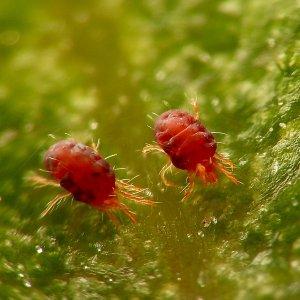 The most common pests:
The most common pests:
- bear This large insect eats the plant, causing it to slowly die. It is recommended to get rid of mole crickets using a solution of ammonia;
- spider mite Leaves a barely noticeable web on tomato leaves. The cause is humidity and heat. A solution based on citrus peels is recognized as a good remedy for spider mites;
- wireworm Penetrates deep into the soil and begins to destroy the root system. Egg shells are recognized as an effective remedy against it. Just scatter it around the garden bed and the wireworm will not touch your tomatoes.
The nuances of growing in open ground and in a greenhouse
When growing Kostroma in open ground, carefully monitor the appearance of the plant. If you notice small black or white spots, it means the tomato is lacking zinc. In this case, apply fertilizing with a solution of zinc sulfate. If the leaves are dry and wilting, the bushes do not have enough magnesium. Spraying with magnesium nitrate is required. Remember that in the open air Kostroma is less protected from adverse weather conditions than in a greenhouse.
If the fruits are planted in the greenhouse, monitor the level of nitrogen-containing substances. If the plant stretches, the stem becomes soft, and the leaves become smaller, it means that nitrogen-containing fertilizing is necessary. Urea is great for this - dilute one tablespoon per 10 liters of water.
Harvesting and application
The Kostroma variety is universal in use. With his help, the hostess prepare juicy salads, original snacks, spicy winter blanks. In addition, tomatoes make excellent tomato paste and ketchup.Kostroma does not lose its taste and beneficial properties even after heat treatment.
Tomatoes ripen at the same time, so you will only be able to enjoy ripe vegetables for 1-2 weeks. However, in some regions of the country, summer residents harvest their crops longer—for a month.
Advantages and disadvantages of the variety
Advantages of the Kostroma variety:
- excellent taste and high content of vitamins;
- immunity to disease;
- resistance to transportation;
- long shelf life;
- versatility in use.
Cons of tomato:
- mandatory bush formation is required;
- the need for gartering and pinching.
Farmer reviews
Here's what Russian farmers say about the Kostroma variety:
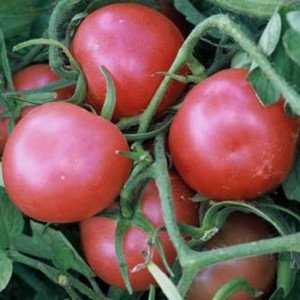 Vladimir, Ufa: “I have been ordering seeds online for the third year in a row. I really like this variety. It has excellent germination and even tomatoes. My grandchildren also love Kostroma, so I will continue to grow tomatoes next year.”
Vladimir, Ufa: “I have been ordering seeds online for the third year in a row. I really like this variety. It has excellent germination and even tomatoes. My grandchildren also love Kostroma, so I will continue to grow tomatoes next year.”
Lyudmila, Cheboksary: “The yield is decent, caring for the bushes is not difficult. I’ve been planting this variety for about 7 years now, and only once did it get blackleg. Now I always take preventive measures to avoid illnesses.”
Dmitry, Ozersk: “My friends recommended Kostroma to me. As for me, the taste of the variety is fresh and watery. It is significantly inferior to other hybrids. I won’t plant any more.”
Conclusion
Kostroma is not only a famous city in Russia, but also the name of a tasty and beautiful tomato. The hybrid has taken root well in our country, and every year it is gaining the attention of more and more people. Valued for its versatility in use and ease of care.